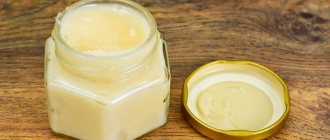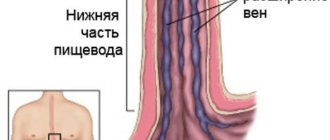The force with which blood flows through the vessels is one of the most important indicators that determines the state of health. Diastolic pressure is used by doctors to diagnose various diseases. What indicators are considered normal, what diseases are indicated by their increase or decrease?
What does it mean?
Before talking about indicators, it is worth familiarizing yourself in more detail with the functional definition of such a concept as lower pressure. It would be useful to know why blood pressure is generally measured and recorded in two quantities.
What does the diastolic value show?
When measuring blood pressure, two numbers are displayed on the tonometer screen - one larger, the other several tens smaller. The larger number reflects the value of systolic blood pressure (SBP), which is often called the “upper”, and the smaller number represents the value of diastolic blood pressure (DBP), respectively, the “lower”.
Systolic blood pressure expresses the force with which blood exerts pressure on the arterial wall as the myocardium contracts and blood is released into the arteries. The process is called systole.
When the chambers of the heart expand and blood rushes into them, the diastolic blood pressure value is recorded, the heart muscle is relaxed at this time. The phase of the cardiac cycle in a state of myocardial relaxation is called diastole, this concept formed the basis for the medical name of “lower” pressure.
What is the norm?
To control pressure, it is necessary to compare your own results with normal or reference values. A normal pressure is 120 over 80, and in a wider range – from 100 to 130 mmHg systolic and from 65 to 85 mmHg diastolic. As you can see, the lower pressure we are considering, 90, does not fit into the reference values, which means we need to figure out what the body is signaling with this indicator.
Normal blood pressure by age
What does 90 mmHg mean?
Let's find out what it means when diastolic pressure is at the level of 90 mm Hg, what this tells the doctor. This is the borderline value of DBP, values above which are considered signs of arterial hypertension.
If the lower pressure does not exceed 90, it is considered elevated within acceptable values, and if the diastolic blood pressure is above 90, this indicates the development of hypertension.
Why can values close to 90 mmHg be considered acceptable? The fact is that both upper and lower pressure can periodically rise (up to 90 mm and above) due to the influence of certain external factors:
- excessive consumption of tonic drinks, caffeinated products and alcohol;
- overeating;
- smoking addiction;
- stress, emotional turmoil, intellectual or physical fatigue.
To determine what exactly caused the increase in DBP to 90 mm, you should see a doctor.
A lower pressure reading of 100 mm or higher is a sign of arterial hypertension, even if the upper pressure is not elevated. Situations when only one of the blood pressure values increases is called isolated hypertension.
In most cases, a diastolic blood pressure value of 100 mm or higher is observed with arterial hypertension of II-III degree and indicates a severe course of hypertension. This is more than a good reason for an urgent visit to the doctor and selection of an appropriate treatment regimen.
How to lower lower blood pressure
To normalize blood pressure, you must first understand the reasons that increase it. For example, with adrenal or thyroid dysfunction, the cause is improper hormone production. When they are in excess, the lower blood pressure rises sharply. A person with one kidney in such an acute condition can die.
If jumps in lower pressure occur due to the accumulation of fluid in the body, it is important to establish the water-ion balance. In some people, it is disrupted due to poor nutrition, overeating, and abuse of salty and fatty foods. For others, fluid stagnation is caused by an imbalance of hormones. In the first case, you can return your lower blood pressure to normal by restoring your diet, daily physical activity, and excluding large amounts of salty, smoked, and fried foods. In a situation with the influence of hormonal levels, it is necessary to receive a course of treatment from an endocrinologist.
When lower pressure increases, the synthesis of renin is disrupted, which should normalize the force of action on the walls of blood vessels. But due to atherosclerosis, the pressure cannot be reduced - even with high elasticity of the walls, the lumen remains narrow due to overgrown atherosclerotic plaques. In such a situation, first of all, it is necessary to reduce the level of bad cholesterol in the blood and monitor its levels.
Reasons why blood pressure is more than 90 mm
If the lower pressure rises to 90 mm Hg. not due to the external factors listed earlier, what other reasons can provoke its jump? Most often, high DBP levels are associated with the following provoking factors:
- hereditary predisposition to certain values of diastolic pressure;
- diseases of the kidneys, heart, thyroid gland, liver and others;
- metabolic disorders;
- disorders of hemostasis (the system for maintaining blood flow);
- long-term use of medications, the secondary effect of which is vasoconstriction (narrowing of blood vessels).
The reasons why diastolic pressure rises to 90 mm and above are numerous; to clarify them, it is necessary to undergo a diagnostic examination.
High lower pressure in a person (90 mm and above) with optimal upper values (less than 140 mm) means the development of isolated diastolic hypertension. This condition poses a serious conundrum for the doctor and a particular concern for the patient, since there are no medications that specifically lower blood pressure alone. Therefore, it is more difficult to treat such conditions than classic hypertension, when the values of upper and lower pressure increase synchronously. But if you follow your doctor’s instructions, it is still possible to stabilize your blood pressure.
If the lower pressure does not exceed 90 mm, and most importantly, the person feels healthy, treatment may not be necessary.
If you follow your doctor's instructions, it is possible to stabilize your blood pressure.
Increased lower pressure: causes
Lower blood pressure readings are often affected by emotional overload, stress, and excessive physical activity. If you have heart disease, it is important to avoid such situations. In addition, alcohol and salt can change the values. These two products have pronounced activity regarding the condition of blood vessels. Do not forget about smoking - this is an important factor that impedes the passage of oxygen through the bloodstream, reduces the elasticity of the walls of blood vessels and, as a result, makes them unable to respond to changes in external and internal factors.
Other reasons that increase lower blood pressure may be:
- adrenal dysfunction;
- pyelonephritis;
- renal failure;
- polycystic disease;
- amyloidosis;
- disorders of the thyroid gland, manifested by excessive or insufficient amounts of hormones produced.
- obesity;
- musculoskeletal problems;
- disturbances in the functioning of the heart.
An increase in lower pressure causes the kidneys to produce more renin - a special biological substance that, in the process of complex chemical reactions, activates the production of elements that have a vasoconstrictor effect. As a result, the heart is stimulated and blood pressure increases, which further aggravates the situation.
This situation can lead to chronic glomerulonephritis and kidney abnormalities. Normal blood flow is disrupted, the myocardium loses its ability to relax, the walls begin to be damaged, and their ability to stretch and contract in response to changes in temperature and other physical indicators decreases.
The absence of measures taken to normalize blood pressure will sooner or later lead to thromboembolism and impairment of cognitive reactions.
What to do to normalize a person’s condition?
Since there are no medications that could reduce the diastolic reading of 90 mm in isolation, it means that we should look for other ways to normalize a person’s condition. The most common causes of vascular disorders are bad habits and an unhealthy lifestyle of the patient, so the main thing that needs to be done to reduce DBP is to eliminate these provoking factors. For many, this will not be an easy task, but if you have a strong desire to gain health, you can try:
- normalize body weight, control the caloric content of food consumed;
- monitor the quality of the foods you eat - exclude fatty (including baked goods with a lot of fat), fried, salty, and too sweet foods from your diet;
- special attention should be paid to salt - its total amount per day should not exceed 5 g (about 1 level teaspoon);
- get rid of harmful attachments - to cigarettes and alcohol, to sweet carbonated waters and snacks;
- monitor the state of the emotional background - in many people, blood pressure reacts extremely sharply to emotional shocks (use “distractions”, meditation);
- avoid mental and physical overstrain (do not take on overtime work, do not increase the load in the training room, etc.).
The gym and optimal physical activity are exactly what you need for vascular health. Without regular exercise, walking or jogging (as agreed with your doctor), it will not be possible to maintain normal vascular tone.
conclusions
- A DBP value of 90 mmHg is the borderline value of diastolic pressure (the upper limit of normal).
- Values exceeding 90 mm in diastolic value are signs of arterial hypertension.
- The condition when the upper blood pressure is below 140 mm and the lower blood pressure is above 90 mm is called isolated diastolic hypertension. There are no medications that have an isolated effect on lower blood pressure.
- In June 2021, the American Heart Association decided on the need to lower the diastolic standard to 80 mmHg. Based on this decision, a value of 90 mm is considered increased pressure and requires reduction.
What to do if the lower pressure reading is 90
Treatment of hypertension begins with diagnosis to identify the underlying cause that led to the increase in levels. To eliminate hypertension, drugs of different therapeutic effects are used. To reduce blood pressure, you can use traditional methods, but only after prior consultation with your doctor.
Drug treatment
In the treatment of isolated diastolic therapy, a special approach is required - you need to choose drugs that will reduce renal pressure, but will not affect the upper values.
There are no drugs to treat isolated diastolic hypertension.
Main groups of medicines:
- diuretics with potassium - Amiloride, Pterofen;
- beta-blockers – Bisoprolol, Propranolol, Atenolol;
- ACE inhibitors – Liprazide, Ramipril, Losartan;
- calcium channel blockers – Nifedipine, Corinfar, Verapamil;
- antispasmodics – Papaverine, Dibazol.
Read also: Normal blood pressure in a teenager
Papaverine effectively lowers blood pressure
Drug therapy will be useless if the patient does not adhere to a healthy lifestyle. It is necessary to give up smoking and alcohol, walk more in the fresh air, exercise regularly but in moderation, get enough sleep, and avoid stressful situations.
Folk remedies
Medicinal plants that have a sedative and diuretic effect will help reduce blood pressure.
- Motherwort is a mild diuretic and improves heart function. Brew 400 ml boiling water 2 tbsp. l raw materials, leave in a sealed container for a quarter of an hour. Divide the medicine into 3-4 equal portions, drink throughout the day, the last dose should be before bed. Duration of therapy is 3–4 weeks.
- Valerian – has a sedative effect, normalizes the functioning of the thyroid gland. And fill the thermos with 1 tbsp. l crushed plant roots, brew 220 ml of boiling water, leave overnight. Strain, drink 14 ml three times a day. Treatment can be continued for no more than 6 weeks.
- Lingonberries have a diuretic, anti-inflammatory and sedative effect. Mix 120 ml of lingonberry juice with 300 ml of water, add 15 ml of liquid honey. The drink should be drunk in 4 doses during the day, it should be taken half an hour after meals.
Lingonberry juice has many beneficial properties










